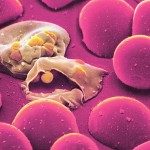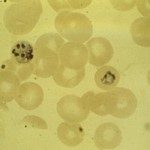Link to Pubmed [PMID] – 17631448
C R Biol 2007 ; 330(6-7): 530-3
Satellite cells, which lie under the basal lamina of muscle fibres, are marked by the expression of Pax7, and in many muscles of Pax3 also. A pure population of satellite cells, isolated from a Pax3(GFP/+) mouse line by flow cytometry, contribute very efficiently to skeletal muscle regeneration and also self-renew, thus demonstrating their role as muscle stem cells. Pax3/7 regulates the entry of these cells into the myogenic programme via the activation of the myogenic determination gene, MyoD. Pax7 is also essential for the survival of satellite cells. This dual role underlines the importance of ensuring that a tissue stem cell that has lost its myogenic instruction should not be left to run amok, with the potential risk of tissue deregulation and cancer. A somite-derived population of Pax3/Pax7 positive cells is responsible for muscle growth during development and gives rise to the satellite cells of postnatal muscles. In the absence of both Pax3 and Pax7, these cells die or assume other cell fates. Pax3/7 lies genetically upstream of both MyoD and Myf5, which determine the skeletal muscle fate of these cells. To cite this article: M. Buckingham, C. R. Biologies 330 (2007).

